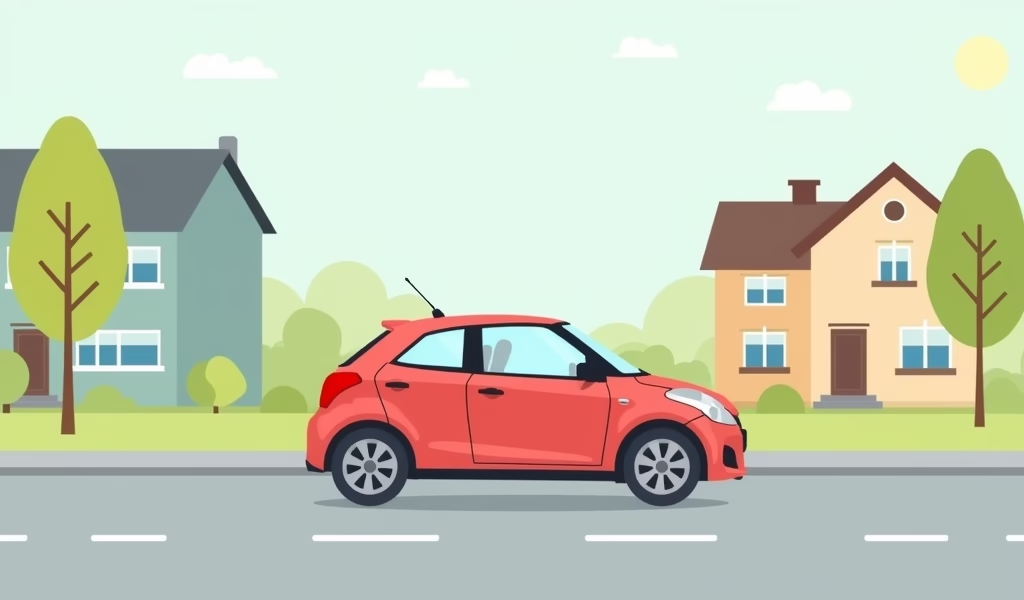Overview
This article provides five practical strategies for young drivers to reduce their high insurance premiums: completing defensive driving courses (10-15% savings), choosing insurance-friendly vehicles, enrolling in usage-based insurance programs (10-30% savings), leveraging good student discounts (10-25% savings), and strategically adjusting deductibles. The guidance emphasizes that despite statistical risk factors that drive up costs for drivers under 25, young motorists can significantly lower their insurance expenses through smart choices and safe driving habits.
Table of Contents
- Understanding Young Driver Premiums: Why So High?
- The Magic of Defensive Driving Courses
- Vehicle Selection: Your Car’s Secret Impact on Insurance Rates
- Usage-Based Insurance: Let Your Driving Do the Talking
- Hitting the Books: Student Discounts That Save Big
- Deductible Strategies: The Balancing Act
- Conclusion: Your Road to Insurance Savings
- Frequently Asked Questions
Understanding Young Driver Premiums: Why So High?
If you’ve recently started driving and shopped for car insurance for young drivers, you’ve probably experienced that jaw-dropping moment when you see the premium. Trust me, as someone who’s spent decades under the hood and helping young folks with their vehicles, I understand the frustration.
Insurance companies aren’t just picking on young drivers for fun. The numbers tell a story insurance companies can’t ignore. According to the Centers for Disease Control and Prevention, drivers aged 16-19 are nearly three times more likely to be in a fatal crash than drivers over 20. Insurance is all about risk assessment, and statistically, young drivers represent a higher risk.
But here’s the good news – you’re not powerless against these high rates. After years of seeing young drivers struggle with insurance costs while maintaining their vehicles, I’ve compiled five proven strategies that actually move the needle on those premiums. These aren’t just theoretical tips – they’re road-tested solutions that have saved my customers hundreds, sometimes thousands, of dollars.
The Magic of Defensive Driving Courses
Think of defensive driving courses as premium-slashing magic wands. These specialized training programs transform how insurance companies see you, from high-risk rookie to educated road warrior. The skills you’ll learn don’t just save money – they might save your life.
Most insurers offer discounts ranging from 10-15% for young drivers who complete accredited defensive driving courses. That percentage might seem small, but when you’re facing premiums that can exceed $2,000 annually, we’re talking about significant cash back in your pocket.

Vehicle Selection: Your Car’s Secret Impact on Insurance Rates
That rumbling muscle car might make your heart race, but it’ll make your insurance premiums skyrocket too. Vehicle choice plays an outsized role in determining what you’ll pay for coverage, especially when you’re under 25.
Insurance companies examine several factors when evaluating vehicles:
- Safety ratings and crash test performance
- Repair costs and parts availability
- Horsepower and engine size
- Theft rates for specific models
- Vehicle age and replacement value
From my experience in the shop, I’ve seen firsthand how cheap car insurance for young drivers often comes with sensible vehicle choices. Mid-sized sedans and smaller SUVs with excellent safety ratings typically offer the sweet spot of affordability, reliability, and insurance-friendliness.
Vehicles like the Honda Civic, Toyota Corolla, Mazda 3, and Subaru Impreza tend to be much kinder to your wallet when it comes to insurance premiums. They’re like the reliable friends of the automotive world – not flashy, but they’ll never let you down and won’t empty your bank account.
The eternal question of new versus used deserves consideration too. While new cars come equipped with advanced safety features that can reduce insurance costs, used vehicles generally cost less to insure overall because their lower value represents less financial risk for insurers if damaged or totaled.
Usage-Based Insurance: Let Your Driving Do the Talking
Technology has revolutionized how insurance companies assess risk, and young drivers can leverage this to their advantage. Usage-based insurance programs (also called telematics) use devices or smartphone apps to monitor your actual driving behavior rather than relying solely on age-based statistics.
These smart programs track factors such as:
- When you drive (late-night driving typically carries higher risk)
- How smoothly you accelerate and brake
- Your typical driving speeds
- How many miles you cover
- Hard cornering and other potentially risky behaviors
For young drivers who practice safe habits behind the wheel, the savings can be substantial – often 10-30% off standard premiums. Programs like Progressive’s Snapshot, Allstate’s Drivewise, and State Farm’s Drive Safe & Save offer excellent opportunities to prove your safe-driving mettle.
As a mechanic who’s seen countless preventable accidents roll into my shop, I can tell you these programs reward exactly the kind of driving habits that keep your vehicle (and you) in one piece. It’s like having a driving instructor who pays you for good technique instead of charging you.
One word of caution – if your driving resembles a Fast and Furious audition, these programs might actually increase your rates. They’re designed to reward safe drivers, not subsidize risky ones.
Hitting the Books: Student Discounts That Save Big
Your academic performance might seem worlds away from your driving habits, but insurance companies see a strong correlation between success in the classroom and responsibility on the road. That’s why many insurers offer substantial “good student discounts” for young drivers who maintain strong academic records.
Typically, maintaining a B average (3.0 GPA) or higher can qualify you for discounts ranging from 10-25% – making this potentially the single most valuable discount available to young drivers. For a premium that might otherwise be $2,000 annually, we’re talking about saving up to $500 just by keeping up with your studies.
College students have additional opportunities to save. If you’re attending school more than 100 miles from home without your car, you might qualify for an “away-at-school” discount that recognizes the reduced risk when you’re not regularly driving the insured vehicle.
To claim these discounts, you’ll typically need to provide documentation such as:
- Recent report cards or transcripts
- Dean’s list certificates
- Enrollment verification for distant schools
- Honor society membership documentation
As someone who’s helped many families navigate the maze of best car insurance for young drivers, I’ve seen these academic discounts make the difference between affordable coverage and painful financial strain.

Deductible Strategies: The Balancing Act
Your deductible – the amount you pay out-of-pocket before insurance coverage kicks in – acts like a financial seesaw with your premium. When your deductible goes up, your premium typically comes down, creating an opportunity for strategic savings.
Based on what I’ve seen with my younger customers, increasing your deductible from $500 to $1,000 could reduce your premium by 10-20%. For a young driver facing a $2,000 annual premium, that’s potentially $200-$400 back in your pocket each year.
However, this strategy requires careful consideration. Before raising your deductible:
- Ensure you have savings to cover the higher deductible amount if needed
- Assess your personal risk factors (driving conditions, experience level)
- Calculate how long it will take premium savings to equal the increased deductible risk
This approach works best for drivers who maintain their vehicles properly and drive safely. I’ve seen too many young drivers opt for high deductibles without the savings to back them up, leading to difficult situations when repairs are needed after an accident.
The sweet spot often involves having enough emergency savings to cover your chosen deductible while maximizing premium savings. Think of it as investing in yourself as a safe driver – a bet that pays dividends every month when your insurance bill arrives.
Conclusion: Your Road to Insurance Savings
Navigating car insurance as a young driver doesn’t have to be a budget-crushing experience. By implementing these five strategic approaches – completing defensive driving courses, choosing insurance-friendly vehicles, exploring usage-based insurance, leveraging academic achievements, and smartly adjusting deductibles – you can significantly reduce the financial burden while maintaining proper coverage.
Remember that insurance companies fundamentally want to reward safe drivers, regardless of age. Your goal should be to position yourself as exactly that through both your driving habits and the smart choices you make regarding your vehicle and coverage options.
As a mechanic who’s spent decades helping drivers of all ages keep their vehicles in top condition, I can tell you that regular maintenance also plays a crucial role in your insurance journey. Well-maintained vehicles are less likely to experience mechanical failures that could lead to accidents, helping you build that all-important claims-free history that eventually leads to lower rates.
The road to affordable insurance as a young driver might seem uphill at first, but with these proven strategies, you’ll find yourself cruising toward savings sooner than you might expect. Keep your driving record clean, your grades up, and your vehicle well-maintained – your wallet will thank you.
Frequently Asked Questions
At what age do car insurance rates typically start decreasing?
Insurance rates usually begin noticeably decreasing around age 25, assuming you maintain a clean driving record. Some companies may offer gradual reductions starting at age 21 if you’ve been claim-free.
Can I stay on my parents’ insurance policy to save money?
Yes, remaining on your parents’ policy often results in significant savings through multi-car discounts and their established history. This arrangement typically works as long as you live with them or are away at school.
Does the color of my car affect my insurance rate?
No, contrary to popular belief, car color does not impact insurance premiums. Factors like the vehicle’s make, model, age, safety features, and repair costs are what actually determine rates.
How much can a speeding ticket increase my insurance as a young driver?
A single speeding ticket can increase a young driver’s insurance by 20-30%, with multiple violations causing even steeper hikes. This surcharge typically affects your rates for 3-5 years, making safe driving especially important for young motorists.
Is it worth getting full coverage insurance as a young driver?
Full coverage is generally recommended if your vehicle is newer or has significant value, despite the higher premium. For older vehicles worth less than $4,000, liability-only coverage might make more financial sense when calculating cost versus potential loss.

